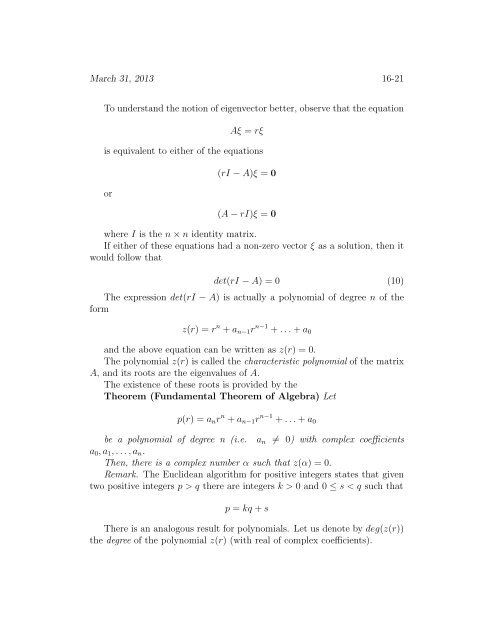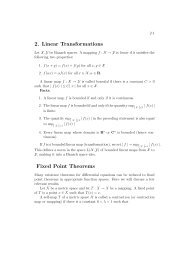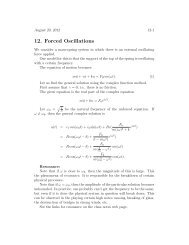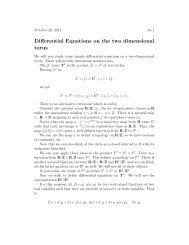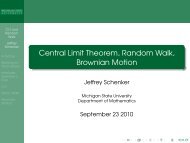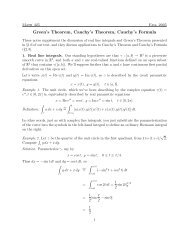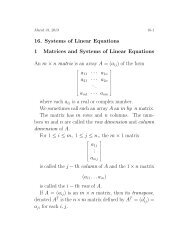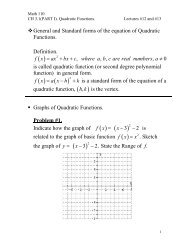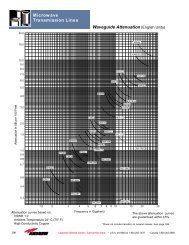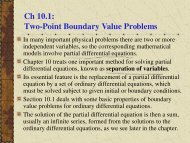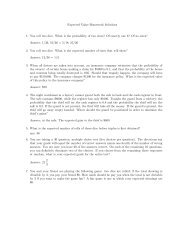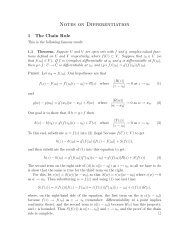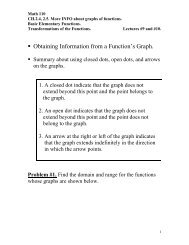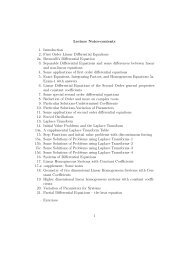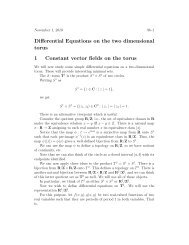16. Systems of Linear Equations 1 Matrices and Systems of Linear ...
16. Systems of Linear Equations 1 Matrices and Systems of Linear ...
16. Systems of Linear Equations 1 Matrices and Systems of Linear ...
Create successful ePaper yourself
Turn your PDF publications into a flip-book with our unique Google optimized e-Paper software.
March 31, 2013 16-21To underst<strong>and</strong> the notion <strong>of</strong> eigenvector better, observe that the equationAξ = rξis equivalent to either <strong>of</strong> the equationsor(rI − A)ξ = 0(A − rI)ξ = 0where I is the n × n identity matrix.If either <strong>of</strong> these equations had a non-zero vector ξ as a solution, then itwould follow thatdet(rI − A) = 0 (10)The expression det(rI − A) is actually a polynomial <strong>of</strong> degree n <strong>of</strong> theformz(r) = r n + a n−1 r n−1 + . . . + a 0<strong>and</strong> the above equation can be written as z(r) = 0.The polynomial z(r) is called the characteristic polynomial <strong>of</strong> the matrixA, <strong>and</strong> its roots are the eigenvalues <strong>of</strong> A.The existence <strong>of</strong> these roots is provided by theTheorem (Fundamental Theorem <strong>of</strong> Algebra) Letp(r) = a n r n + a n−1 r n−1 + . . . + a 0be a polynomial <strong>of</strong> degree n (i.e. a n ≠ 0) with complex coefficientsa 0 , a 1 , . . . , a n .Then, there is a complex number α such that z(α) = 0.Remark. The Euclidean algorithm for positive integers states that giventwo positive integers p > q there are integers k > 0 <strong>and</strong> 0 ≤ s < q such thatp = kq + sThere is an analogous result for polynomials. Let us denote by deg(z(r))the degree <strong>of</strong> the polynomial z(r) (with real <strong>of</strong> complex coefficients).


